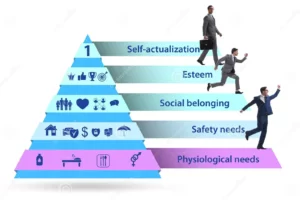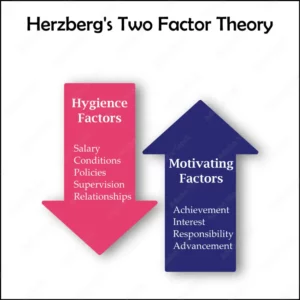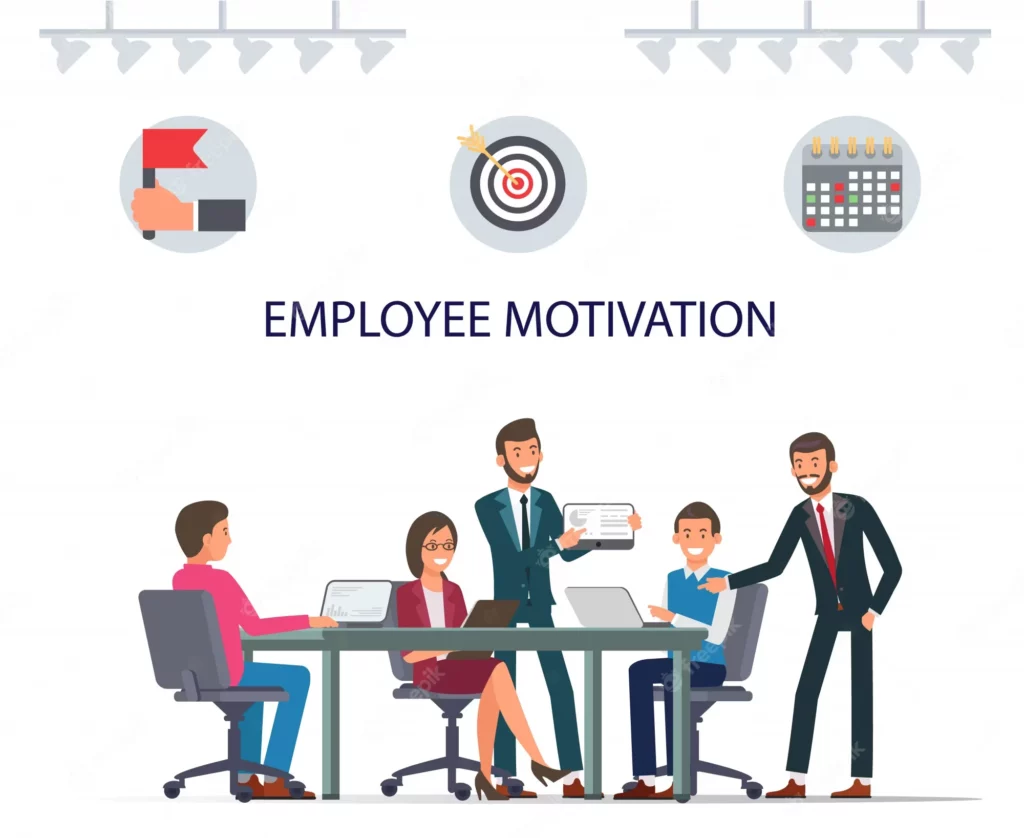Creating a thriving workplace demands understanding the role of employee motivation in driving productivity, retention, and overall business success. This comprehensive guide will delve deep into the concept, the theories behind it, and practical strategies to boost motivation levels within your organization. So, let’s dive in and explore!
Contents
Why is Employee Motivation Important?
Employee motivation is the driving force that initiates, guides, and maintains goal-oriented behaviors within an organization. Therefore, its importance cannot be overstated, as it serves as the backbone of a productive and thriving workplace. Here are the key reasons why employee motivation is crucial:
Fuels Productivity and Performance
 Motivated employees are the most productive. They bring a high level of energy, passion, and commitment to their work, going above and beyond their job responsibilities. They consistently seek to improve, innovate, and contribute significantly to the organization’s growth and success. Without motivation, employees tend to do the bare minimum, leading to stagnation and a decline in productivity.
Motivated employees are the most productive. They bring a high level of energy, passion, and commitment to their work, going above and beyond their job responsibilities. They consistently seek to improve, innovate, and contribute significantly to the organization’s growth and success. Without motivation, employees tend to do the bare minimum, leading to stagnation and a decline in productivity.
Enhances Employee Engagement
Engaged employees are those who feel passionate about their jobs and are committed to the organization. Employee motivation is an essential factor in fostering this engagement. It encourages employees to take an active role in their work and feel a deeper connection to their tasks, peers, and the company as a whole. This engagement is linked with better performance, higher job satisfaction, and increased loyalty.
Boosts Job Satisfaction and Retention
Motivation directly impacts job satisfaction. Employees who feel motivated find their work more fulfilling, leading to higher job satisfaction levels. This satisfaction, in turn, reduces turnover rates. Companies with motivated employees often have lower attrition rates, saving the organization from the time-consuming and expensive process of replacing staff.
Promotes a Positive Work Culture
 Motivation helps cultivate a positive work culture. When employees are motivated, they tend to collaborate better, communicate effectively, and contribute positively to the workplace environment. This healthy work culture increases morale, productivity, and overall business performance.
Motivation helps cultivate a positive work culture. When employees are motivated, they tend to collaborate better, communicate effectively, and contribute positively to the workplace environment. This healthy work culture increases morale, productivity, and overall business performance.
Drives Growth and Innovation
Motivated employees are often the source of new ideas and innovations. They take initiative, think creatively, and are more open to embracing change. By encouraging motivation, organizations can create an environment where innovation thrives, leading to growth and competitive advantage.
The Key Drivers Of Motivation Among Employees
 Did You Know? A staggering 85% of employees worldwide are not engaged or are actively disengaged in their job. But what drives motivation among the left out 15%?
Did You Know? A staggering 85% of employees worldwide are not engaged or are actively disengaged in their job. But what drives motivation among the left out 15%?
Look, there’s no one-size-fits-all solution when it comes to what drives motivation among employees. However, research and practical experience have identified several key drivers that commonly influence employee motivation.
- Employees are more motivated when they find their work meaningful and believe it contributes to a larger purpose.
- Recognition for hard work is a significant driver of motivation.
- Employees are more likely to be motivated if they can see a clear path to advancement or have opportunities to acquire new skills.
- Employees often feel more motivated when they have a certain degree of autonomy and control over their work.
So, these were some of the factors that drive motivation among employees. Stay along as we will explore some astonishing theories of motivation in the next section.
Theories of Employee Motivation
Several psychological and management theories provide insights into what motivates employees at work. This section discusses a few key theories and their implications for managers and leaders.
Maslow’s Hierarchy of Needs
 This theory posits that individuals have a hierarchy of needs that must be met, ranging from basic physiological needs to self-actualization. So, employers must ensure that the workplace environment meets these needs to keep employees motivated. HR can use this theory to develop a holistic approach to employee well-being:
This theory posits that individuals have a hierarchy of needs that must be met, ranging from basic physiological needs to self-actualization. So, employers must ensure that the workplace environment meets these needs to keep employees motivated. HR can use this theory to develop a holistic approach to employee well-being:
- Physiological and Safety Needs: Ensure fair compensation, healthy working conditions, and job security.
- Love/Belonging Needs: Foster a supportive work environment and promote team-building activities.
- Esteem Needs: Recognize employees’ achievements and provide opportunities for them to gain respect.
- Self-Actualization Needs: Encourage personal growth and development through training and career advancement opportunities.
Herzberg’s Two-Factor Theory
 Herzberg suggests that factors such as achievement, recognition, and responsibility drive job satisfaction, while aspects like company policy, supervision, and salary can cause dissatisfaction. So, leaders should focus on both enhancing satisfiers and minimizing dissatisfiers to improve motivation. HR should:
Herzberg suggests that factors such as achievement, recognition, and responsibility drive job satisfaction, while aspects like company policy, supervision, and salary can cause dissatisfaction. So, leaders should focus on both enhancing satisfiers and minimizing dissatisfiers to improve motivation. HR should:
- Address hygiene factors, such as working conditions, salary, and company policies, to avoid dissatisfaction.
- Enhance motivators, such as recognition, responsibility, and opportunities for growth, to increase job satisfaction.
Expectancy Theory
Vroom’s expectancy theory proposes that employees are motivated when they believe that their efforts will lead to good performance, that good performance will be rewarded, and that they will find the rewards valuable. HR can:
- Ensure employees understand the connection between their efforts, performance, and rewards.
- Make sure rewards are valuable and meaningful to the employees.
Types of Motivation
Broadly, motivation can be categorized into two main types: Intrinsic Motivation and Extrinsic Motivation. So, let’s delve into these types to better understand their characteristics and impacts.
Intrinsic Motivation – Intrinsic motivation comes from within the individual. Interest or enjoyment in the task itself drives it, existing within the individual instead of relying on external pressure or reward. Key aspects of intrinsic motivation include:
- Self-fulfillment: For instance, an employee might take on a challenging project because they find the challenge exciting and fulfilling.
- Curiosity: The desire to learn and grow can drive individuals to explore new ideas or concepts.
- Control: For example, an entrepreneur might be motivated by the autonomy and control they have over their business.
Extrinsic Motivation – Extrinsic motivation refers to behavior driven by external rewards or punishments. Key aspects of extrinsic motivation include:
- Rewards: Monetary benefits, promotions, awards, or even positive feedback can motivate individuals to perform certain tasks.
- Avoidance of punishment: An employee might comply with company rules and regulations to avoid penalties.
- Competition: For instance, team members might compete against each other to achieve the ‘Employee of the Month’ title.
How To Motivate Your Employees?
 Driving motivation in the workplace is crucial for business success. Here are 15 Employee Motivation Tips you must know:
Driving motivation in the workplace is crucial for business success. Here are 15 Employee Motivation Tips you must know:
- Lead by Example – Leadership plays a vital role in employee motivation. Leaders who display passion, commitment, and enthusiasm can inspire the same in their teams.
- Communicate Clearly – Clear communication helps employees understand their roles, responsibilities, and the expectations placed upon them. Regular feedback can help employees feel valued and appreciated.
- Recognize and Reward Achievements – Recognizing employees’ efforts and rewarding their achievements can be a strong motivation booster. This recognition can take different forms – from a simple “well done” to more tangible rewards like bonuses or promotions.
- Provide Opportunities for Growth – Providing opportunities for professional growth and development motivates employees to improve their skills and expand their knowledge, ultimately benefiting the organization.
- Foster a Positive Work Environment – A positive work environment, where respect and fairness are upheld, promotes employee satisfaction, which is closely linked with motivation.
- Encourage Work-Life Balance – Promoting a healthy work-life balance can increase motivation. Flexible working hours, work-from-home options, and promoting wellness can contribute to this balance.
- Implement an Effective Onboarding Program – A well-structured onboarding program helps new employees feel welcomed, valued, and prepared, setting the tone for their motivation levels going forward.
- Foster Team Spirit – A strong sense of camaraderie and teamwork can be a significant motivator. Team-building activities and collaborative projects can enhance team spirit.
- Encourage Innovation – Encouraging employees to bring new ideas and promoting a culture of innovation can be an excellent motivator. This practice recognizes employees’ creative potential and gives them a sense of ownership and engagement.
- Prioritize Employee Well-being – Invest in your employees’ well-being. This investment could be in the form of wellness programs, health benefits, or mental health resources.
- Provide Constructive Feedback – Constructive feedback helps employees understand their strengths and areas for improvement, guiding their professional development and boosting motivation.
- Encourage Healthy Competition – Healthy competition can be an excellent motivator. Gamification, reward systems, or performance-based incentives can encourage it.
- Provide Job Security – Employees are likely to be more motivated when they feel secure in their jobs. Clear communication regarding the company’s status and future plans can help provide this security.
- Implement Peer Recognition Programs – Peer recognition programs, where employees acknowledge and appreciate each other’s efforts, can boost morale and motivation.
Conclusion
In conclusion, fostering motivation within the workplace is not a one-off task but an ongoing process that requires thoughtful strategies and committed efforts. However, it’s crucial to remember that what resonates with one employee might not necessarily have the same impact on another. Therefore, a one-size-fits-all approach is less effective than tailoring strategies to individual needs and preferences.
As we navigate through this comprehensive discussion, one factor stands out consistently. And that is an Employee wellness program.
At MantraCare, we have a team of health experts, counselors, and coaches who serve corporate employees with 10+ well-being programs including EAP, Employee Diabetes Reversal, Corporate MSK, Employee Fitness, Corporate Yoga, and Employee Meditation.
